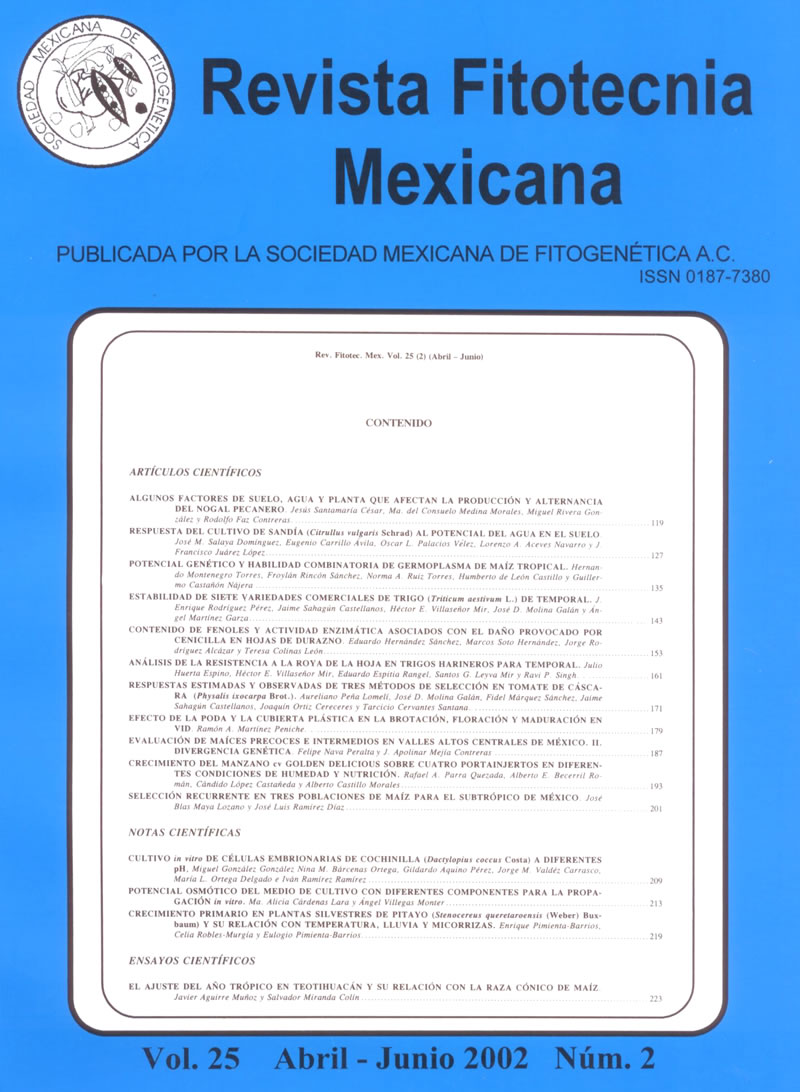PRIMARY GROWTH OF PITAYO (Stenocereus queretaroensis (Weber) Buxbaum) WILD PLANTS AND ITS RELATION WITH TEMPERATURE, RAINFALL AND MICORRHYZAE
Main Article Content
Abstract
The slow growth of pitayo (Stenocereus queretaroensis) has been one of the main factors limiting its cultivation, because eight years
are required to obtain a production large enough for commercial profitability. The main aim of this work was to characterize the primary growth in branches of pitayo plants and evaluate its relation with the seasonal variation of temperature, rainfall and colonization by mycorrhizal fungi in naturally occurring stands in Autlán, Jalisco (AJ), Santa Rosa, Zacatecas (SRZ) and in Zacoalco de Torres, Jalisco (ZTJ), during 1996 and 1997. The stem growth period in pitayo plants ranged from 120 to 150 days, and it showed a simple sigmoidal curve; its logarithmic phase, showed slow growth and occurred at the beginning of the Summer, followed by a linear phase that occurred in late Summer and early Fall, and a senescence phase that occurred at the beginning of Winter, when air temperature decreased and vegetative growth gradually decreased. The daily growth rate and total cumulative stem extension were higher in AJ than in ZTJ and SRZ. It was concluded that the highest cumulative stem extension on S. queretaroensis plants at AJ was negatively correlated with maximal and minimal air temperatures (r = -075 y r = -0.83, respectively; P ≤ 0.05) and positively correlated with colonization by mycorrhizal fungi (r = 0.61; P ≤ 0.05).

